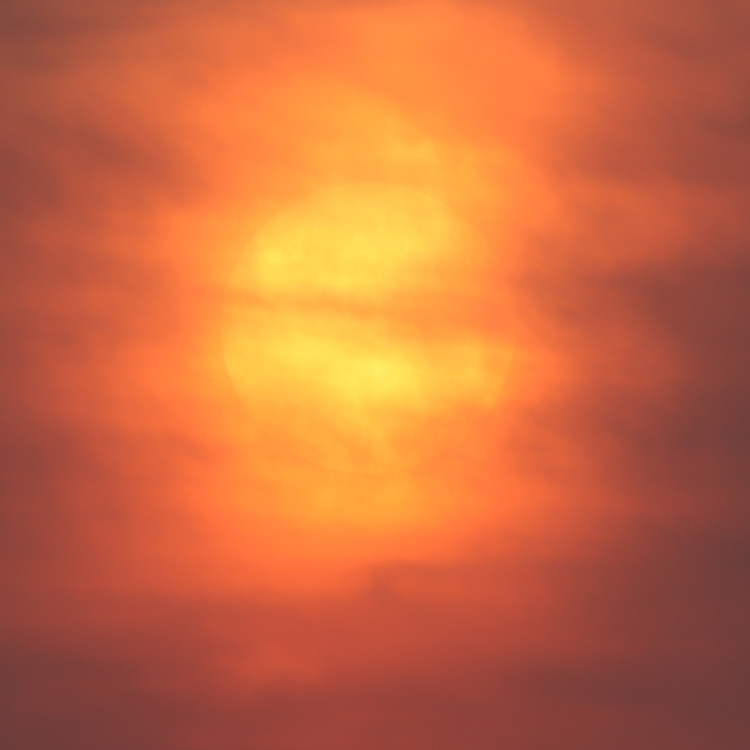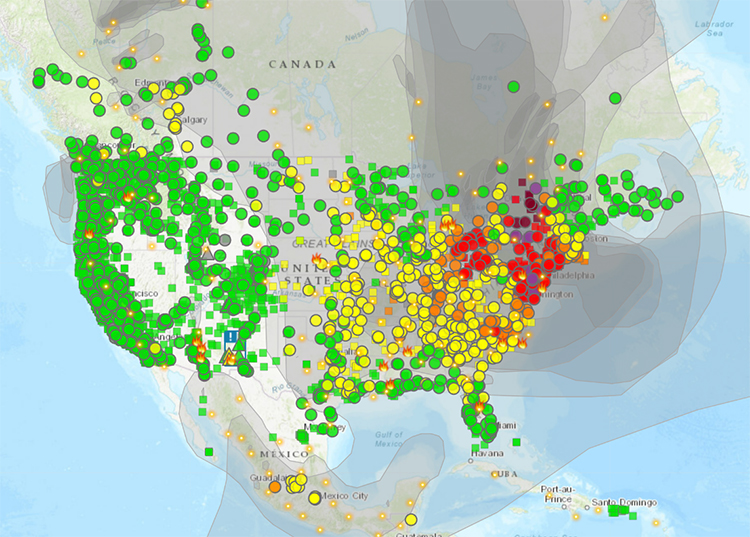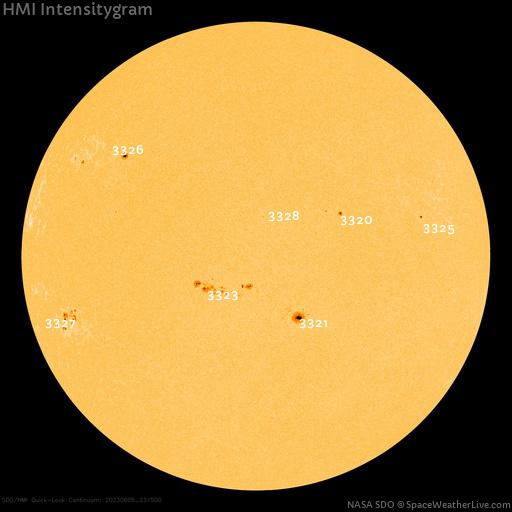Sunset last night was fairly apocalyptic.

The rich orange color – fiery, one might say – is quite striking. In fact, all day long, the quality of the sunlight had been strikingly diffuse and orange-tinted. But sunset really brought out the color.

This unusual circumstance is due to a very heavy atmospheric load of particulates, shockingly coming from the other side of the continent. Wildfires burning in Canada are generating prodigious volumes of smoke, and these are being trundled along on enormous currents in the troposphere in a big arc that brings them southward over the east coast of the United States. The air quality index has dropped precipitously, particularly in large cities. Furthermore, the smoke has made daylight uncanny and imbued the landscape with a sense of ominous foreboding.
Here’s a screenshot from this morning’s AirNow fire and smoke map:

AirNow.gov
But there’s a bright side to this situation, and that’s this:

That is a photo I took the night before last, about 15 minutes prior to sunset, when the haze wasn’t quite as obscuring, and essentially acted like a giant “filter” so I could photograph the Sun with my normal camera in my front yard. What shocked me about that photo is that when you zoom in, you can actually make out sunspots!

I was darned near gobsmacked to realize that I was imaging sunspots without any special equipment from a few steps beyond my front door. These are not just dirty spots on my lens or CCD – I checked the sunspot map for the day at Space Weather Live, and sure enough, the pattern matched:

Looks like it’s rotated 90° relative to the Sun’s orientation as I photographed it, but that’s definitely the same pattern – and that’s just so cool.
Though the wildfire smoke is horrible on many levels, it did grant me this special view of the surface of my local star, and I feel privileged for that glimpse.
————————–
Of course, you should be extremely careful in any solar observations. Don’t burn your eyes out by looking directly at the Sun without the benefit of several tens of cubic kilometers of intensely smoke-laden atmosphere to act as a filter!

Great job, sir. Again, you demonstrate what can be seen if you just take the time. It’s amazing to think that out of the 400+ million people here (including some Canadians) you were the only one to take the time to observe and, understand and teach about what was going on. Great job! Thanks
Thanks for writing about this topic! I found it very interesting and ground level science. Your observations may inspire others to get outside.
I know the gobsmacked feeling. I had a similar experience in the mid-90’s. The atmospheric conditions were similar to what we’ve been having here(Southcentral PA) lately, both morning and evening – the red-rubber-ball syndrome – I was able to see patterns of massive -and I mean multiples of those shown above – sunspots. The truly double-gobsmacking came in the evening, when the patterns were all UPSIDE-DOWN! The sun actually appears to do one cartwheel a day, related to our Earthly vantage-point. I was stunned, and remain so…
Wow – cool. I had no idea about the “cartwheel.” Thanks for sharing that!
You are most welcome, and thank you for noticing the phenomenon, and sharing it too.
I am best able to make sense of the sun’s cartwheel by reaching out toward an imaginary sun-rise, and carrying it up and over my head, with the “sunset” behind me with my hand inverted.